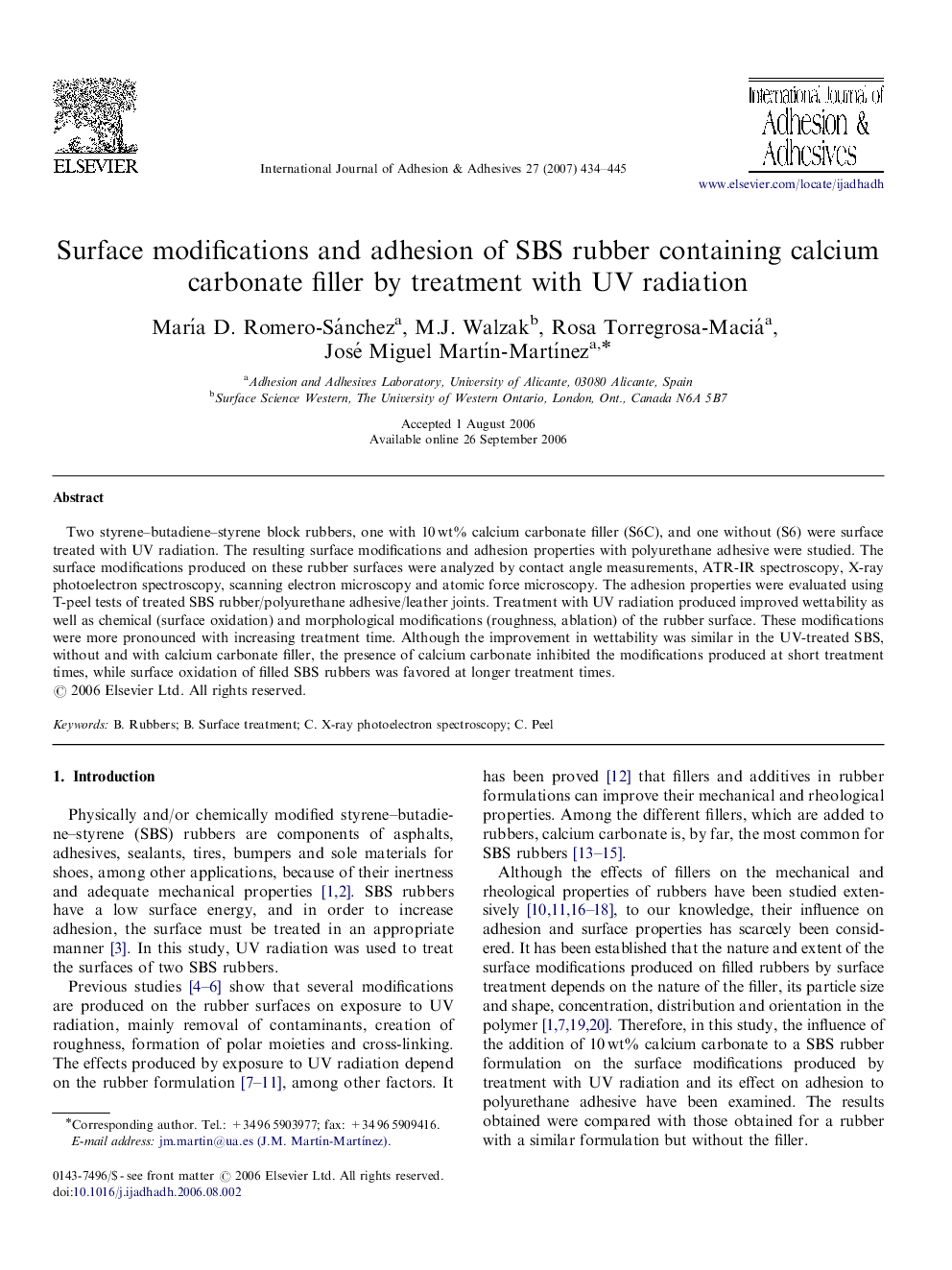| Article ID | Journal | Published Year | Pages | File Type |
|---|---|---|---|---|
| 780151 | International Journal of Adhesion and Adhesives | 2007 | 12 Pages |
Two styrene–butadiene–styrene block rubbers, one with 10 wt% calcium carbonate filler (S6C), and one without (S6) were surface treated with UV radiation. The resulting surface modifications and adhesion properties with polyurethane adhesive were studied. The surface modifications produced on these rubber surfaces were analyzed by contact angle measurements, ATR-IR spectroscopy, X-ray photoelectron spectroscopy, scanning electron microscopy and atomic force microscopy. The adhesion properties were evaluated using T-peel tests of treated SBS rubber/polyurethane adhesive/leather joints. Treatment with UV radiation produced improved wettability as well as chemical (surface oxidation) and morphological modifications (roughness, ablation) of the rubber surface. These modifications were more pronounced with increasing treatment time. Although the improvement in wettability was similar in the UV-treated SBS, without and with calcium carbonate filler, the presence of calcium carbonate inhibited the modifications produced at short treatment times, while surface oxidation of filled SBS rubbers was favored at longer treatment times.
